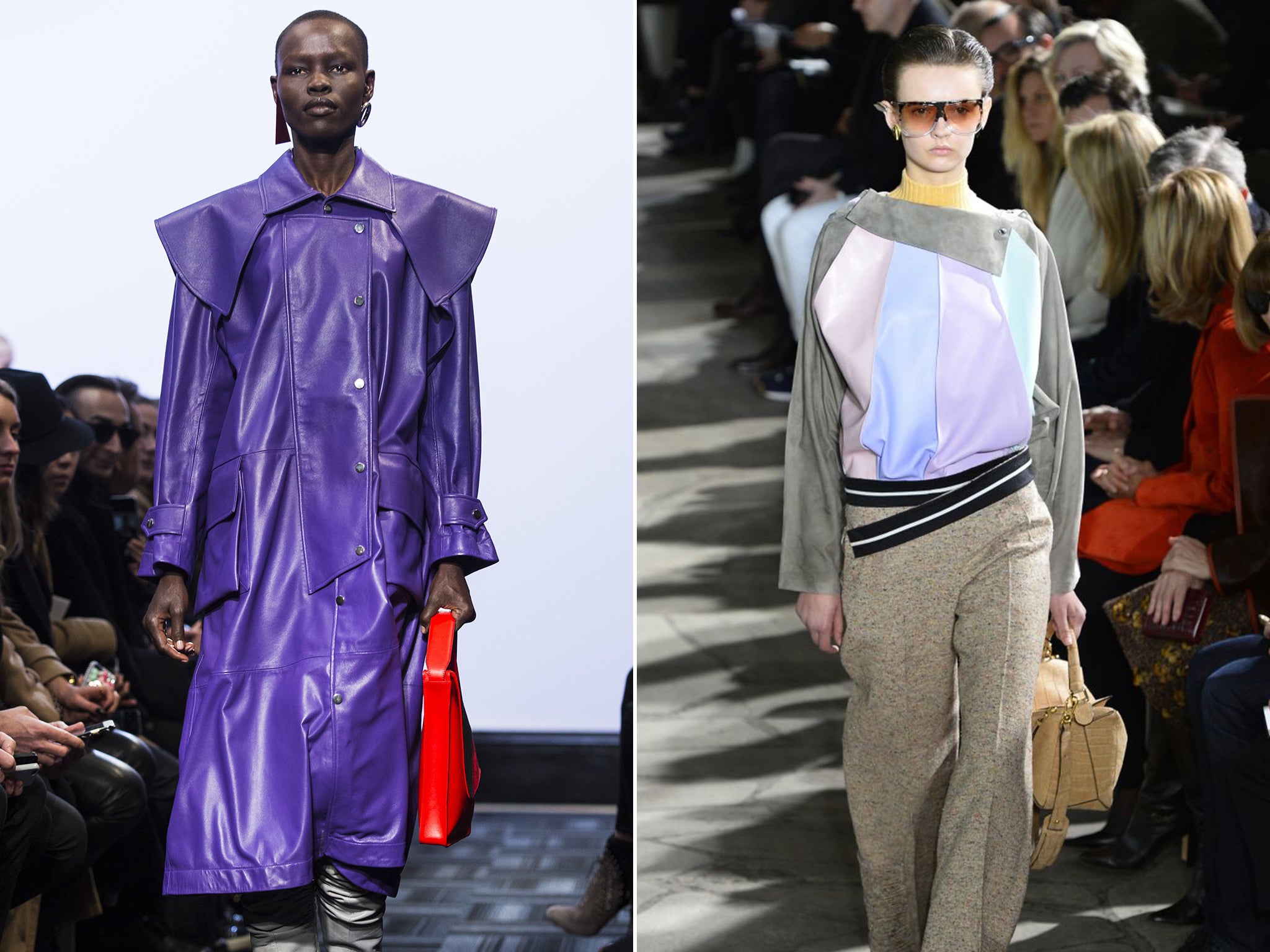Jonathan Anderson: The British designer who's putting his stamp on venerable house Loewe
In an exclusive interview, he reveals how he manages to produce so many menswear and womenswear collections

Your support helps us to tell the story
From reproductive rights to climate change to Big Tech, The Independent is on the ground when the story is developing. Whether it's investigating the financials of Elon Musk's pro-Trump PAC or producing our latest documentary, 'The A Word', which shines a light on the American women fighting for reproductive rights, we know how important it is to parse out the facts from the messaging.
At such a critical moment in US history, we need reporters on the ground. Your donation allows us to keep sending journalists to speak to both sides of the story.
The Independent is trusted by Americans across the entire political spectrum. And unlike many other quality news outlets, we choose not to lock Americans out of our reporting and analysis with paywalls. We believe quality journalism should be available to everyone, paid for by those who can afford it.
Your support makes all the difference.Could Jonathan Anderson be the greatest fashion designer of our times? Probably not. He is, however, one of the most interesting.
He’s interesting, on the most basic level, because he’s producing more collections than other people – he shows menswear and womenswear under his own label and that of the Spanish fashion house Loewe, for which he presented his second catwalk collection in Paris earlier this month. His clothes, for both, are frequently innovative and exciting – notably in menswear, where Anderson chafes at the restraints of tradition and proposes an arresting, occasionally alarming otherness.
It’s been seen as blurring gender boundaries – skirts and blouses shown on male models often do that – but really it’s about challenging people, and the received notions of fashion. “You need to make sure that at least 35 per cent of it is something that you’re not comfortable with,” he once told me. “Because if you get too comfortable you know that it’s stale.”
Jonathan Anderson is 30, born in Northern Ireland but now based between London, where he presents a line named JW Anderson, and Paris, where Loewe’s design studios have been relocated. His father is Willie Anderson, a rugby player capped 27 times for Ireland between 1984 and 1990. Despite coming from a sports-obsessed family, it never rubbed off on Anderson – “I was very into swimming, but I was never into contact sports,” he says. “I think it was because I knew I wasn’t going to get damaged.”

Or maybe it did rub off, because there’s a fierce competitive streak in fashion generally, and in Anderson in particular. By willpower and ambition (possibly over and above talent), Anderson has become the must-know, must-watch name on the contemporary London fashion scene. After seven years in the business (he started out in menswear, expanding to include a women’s line in 2010), his own label is now financed via a minority investment from LVMH, the luxury conglomerate that owns Loewe, where Anderson was installed as creative director in late 2013.
Loewe demonstrates just how ambitious Anderson is. This is no quick-fix, bodged-together new designer job to give a label an added jolt of noteworthiness. Loewe was founded in 1846 and has reeled through a host of designers, including Narciso Rodriguez and Stuart Vevers, searching for an identity.
That’s precisely what Anderson is giving it. He has aggressively redesigned Loewe from the ground up, from reconfiguring the logo (with Mathias Augustyniak and Michael Amzalag of M/M Paris) to gutting and refitting more than 150 Loewe stores around the world – the latest, which opened last week in Miami, features an imported 18th-century Spanish granary, a building taken apart and rebuilt on US soil.
It’s the first time such a rebranding task has been undertaken in Loewe. It also echoes Anderson’s remit – maybe from on high, definitely from himself – to rip it up, and start again, rebuilding Loewe brick by brick. “We’re not a Dior,” says Anderson. “We have to use our resources differently. It’s a new brand and that’s the way I look at it. Yes it’s got 200 years of history but….”
In today’s fashion marketplace, though, does that really matter? Incidentally, Anderson is ripping up those history books – or rather, editing them. He is reissuing key designs from the Loewe archives, designs most people have never seen before, such as vanity cases from 1905, or a calfskin-wrapped clock from the Eighties. “Loewe had to fundamentally get a fashion culture overnight,” reasons Anderson.
“We had to make people believe that this brand had fashion before.” In short, he’s inventing a history for his versions of Loewe, eradicating the parts he doesn’t like, emphasising the parts that fit.
Anderson’s re-engineering of Loewe is a fascinating fashion experiment, and although it’s still too early to measure if it has paid off where it really counts (in sales), it has worked in terms of press. The latest example is Anderson, clad in Loewe ladieswear, on the cover of the biannual menswear magazine Fantastic Man, shot by David Sims.

“He seems to have such a new and fearless approach to the idea of being the creative director of two brands,” says Gert Jonkers, co-editor of the magazine. “It’s amazing how he can do a giant job like Loewe in a very personal way.
“Everything he does there seems to be his personal interest – from the Arts and Crafts furniture in the stores, to the Steven Meisel personal archive pics in the campaign, to the collections.”
Yes, the collections. That’s the bit of Anderson that all the fuss should be about. Jonkers’s reference to Loewe’s imagery by the fabled fashion photographer Meisel is an interesting jumping-off point because, although Loewe advertising does, sometimes, feature the current collection’s clothing, it may also consist of a Vogue Italia editorial from 1997 that Anderson found especially inspirational.
“Trying to use the idea of fashion imagery, ‘Do we own it, do we not?’,” questions Anderson. “It doesn’t matter.”
He does the same thing with his clothes. Fashion trainspotters gleefully rip Anderson collections apart and point out the references to other designers’ work. It’s an act of stylistic Schadenfreude that isn’t unique to this designer, but it’s certainly one he’s taken on the chin.
“I’m very open about this, because I’m comfortable with it: everyone has their place, and I am an editor. I am a creative director. I’m about getting a bunch of people and trying to produce this one vision. I’m not going to tell you what it’s going to be because I want you to challenge me.”
Anderson pauses – a rare moment of silence. He loves to talk. “It’s like going into TK Maxx and being able to find something in there that is a) a bargain and b) something that you’ve never seen before. There’s a massive team here, they’re all great and I could name every single one of them. I’m not afraid to share their names because they help me do what I do. They are my TK Maxx.”
That’s something you don’t hear designers say very often.
Join our commenting forum
Join thought-provoking conversations, follow other Independent readers and see their replies
Comments